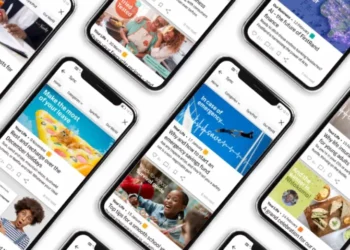More than 75% of nationals in several Middle Eastern and North African nations watch television each day rather than relying on online sources for news, a new study by Northwestern University in Qatar has found.
Aside from the dominance of broadcast television, online video is also popular, with news increasingly being watched as opposed to read, particularly on mobile phones. An example from the study states that 78% of Tunisians watch news videos on their smartphones on daily basis.
Sixty three percent of the population in the MENA region (365 million people) are mobile subscribers and with the number of smartphone connections in Africa estimated to triple by 2020, according to GSMA study, a considerable demand for news video content is expected in the next few years.
Reasons for video domination
“The study confirms what we’ve been observing for some time, not only in MENA region but also in Sub-Saharan Africa,” says Nicolas Pompigne-Mognard, founder and CEO of APO Group. “Disparities in literacy, including digital literacy, and education greatly influence news platforms choices. And despite internet penetration and the rise of social media, it’s also important to take into consideration that there’s still an unequal access to internet technology in both regions. This explains in large part why television still holds a central place in media consumption patterns.”
Lesson to be learnt
A paradigm shift in the approach they take to media communication is needed to ensure that any organisation remains relevant to their audience in the MENA region.
In response to this shift, APO Group launched a new offering, Video Newswire, which will transform press releases from organisations into broadcast quality video footage suited for televised news. To increase smartphone viewership and content shareability, APO Group will also distribute the news video content to specific websites, social media platforms and to over 250 million mobile subscribers across Africa, through its telecoms partners, including MTN Group, Airtel, Orange, and Gloworld.
Other findings from the study
The Northwestern University study also touched on the other ways that MENA nationals receive their news:
- Two-thirds say they get news each day from face-to-face interactions with family and friends (68%), direct messaging (69%), social media (66%), and from the internet more broadly (69%)
- News apps are not as popular with 55% using news apps and 28% of nationals using them daily
- Nearly two in five nationals listen to news on the radio each day, while less than one in five read newspapers daily (38% radio, 18% newspapers)
Differences in news sources were found based on country. In Jordan, Lebanon, and Tunisia, nationals get news more frequently from TV than online sources, while larger proportions of Qataris, Saudis, and Emiratis turn to the internet more than TV for news. Qataris are much less likely, than nationals from other countries, to get news from friends and family on a daily basis (48% Qataris vs. 69% other nationals).
Differences were also found across age groups. As expected, younger nationals prefer internet for their news gathering. The youngest age group (18-24) gets news more frequently from online sources than TV, while older nationals (45+) are less likely to be online and more likely to turn to TV for daily news (18-24 year-olds: 79% internet vs. 70% TV; 25-34 year-olds: 77% internet vs. 79% TV; 35-44 year-olds: 81% internet vs. 73% TV; 45+ year-olds: 42% internet vs. 85% TV).
The study covered respondents in Egypt, Jordan, Lebanon, Qatar, Saudi Arabia, Tunisia and United Arab Emirates.
To see the full findings of the study click here.
Follow Michael Bratt on Twitter @MichaelBratt8














